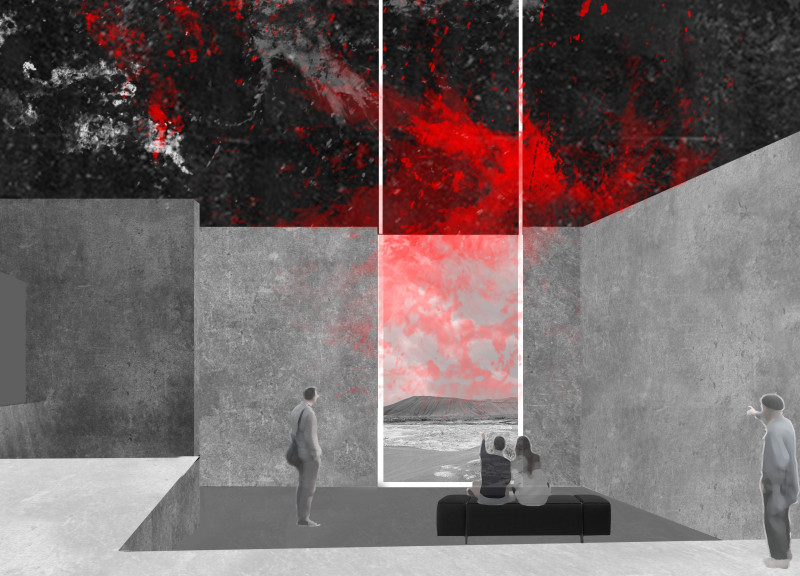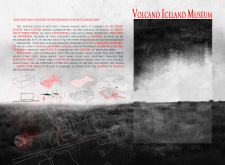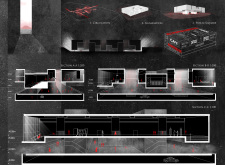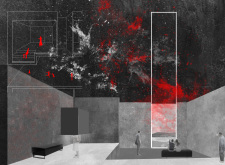5 key facts about this project
The architectural design incorporates various components, including exhibition halls, public spaces, and administrative areas. Circulation is carefully planned to facilitate movement and exploration, allowing visitors to discover the museum's offerings at their own pace. The integration of natural light is a critical aspect of the design, achieved through strategically placed openings in walls and ceilings, enhancing the connection between indoor and outdoor spaces.
Unique Design Approaches
One distinctive feature of the Volcano Iceland Museum is its approach to materiality. The predominant use of concrete, glass, steel, and natural stone reflects the geological essence of Iceland. Concrete forms the primary structural component, representing durability, while glass is utilized for its transparency, creating visual links to the exterior landscapes. Steel is used for structural elements, providing a sense of lightness, and natural stone finishes evoke the surrounding geological context.
Spatial organization plays a crucial role in the project's design. Elevated exhibition areas create striking perspectives that connect visitors to the museum's thematic focus on volcanic landscapes. Additionally, the juxtaposition of open, airy spaces and more confined areas emphasizes the contrasts present in Iceland's geography. This variability in space promotes engagement, encouraging visitors to explore the intricacies of the exhibits fully.
Architectural Features and Elements
The museum's architectural elements are designed to create both functional and aesthetic responses to its environment. Public squares serve as social gathering points, bridging the museum with the local community. The café is designed to act as an inviting space for visitors to relax and reflect on their experiences.
The use of light within the design is particularly noteworthy. The strategic manipulation of natural light enhances the spatial experience, inviting visitors to appreciate the connection between the museum and the ever-changing Icelandic landscape. Shadows and light interplay within the space, altering perceptions and emphasizing the museum's themes.
To gain deeper insights into the architectural design, including how these elements are realized in practice, it is beneficial to examine the project’s architectural plans, sections, and detailed design documents. Exploring these materials will provide a comprehensive understanding of how the Volcano Iceland Museum creatively embodies Iceland’s geological narrative.


























